Fighting moles on your own personal plot- a rather specific matter, unlike the extermination of other pests such as cockroaches, rats and mice. After all, people do not have an aversion to moles. But, alas, it will not be possible to coexist side by side. Therefore, let's look at how to deal with moles in the country.
Peculiarities of mole behavior
First of all, let's get to know this little creature, so hated by all summer residents. This is a small mammal creature. Moles do not eat vegetables, berries and other garden plants. So maybe they are useful animals? After all, they are not interested in your plantings. In addition, they loosen the soil well, increase its fertility and exterminate insect pests.
However, when they settle in your garden plot, you will understand the opposite. They are nothing but inconvenience. Let's sort it out in order. Moles are the real predators. Their main food is slugs, earthworms, various larvae - wireworms and May beetles. Moles feed in huge quantities, making numerous branched passages in the area. The mole moves in the soil, developing a speed of approximately 30 cm per minute. In the finished “trench” the animal runs 60 meters in a minute!
Many of us claim that moles are blind creatures. And some of us colloquially use the established expression “blind as a mole.” However, these animals still have eyes. In order not to disturb the mole when " earthworks", they are covered with skin folds and fur. But when a mole comes to the surface to catch a lizard or a vole, the eyeballs move forward.
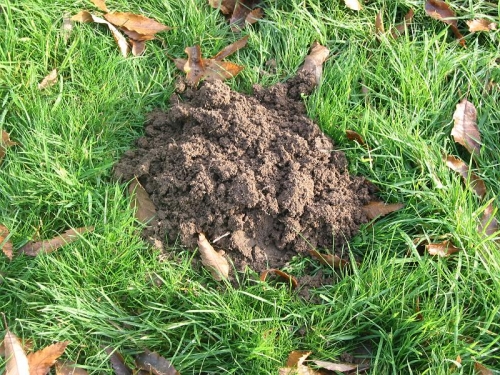
When digging tunnels in the ground, garden paths, flower beds, fruit plantings and beds are destroyed. Damage to the root system also occurs ornamental plants, berry bushes, vegetable crops and bulbous crops. The soil dug up by moles overwhelms their seedlings in the spring and is destructive for plants with a weakened root system. A few loose hummocks can ruin an elegant lawn, into which you have invested a lot of your work, which you have watered and nurtured every day.
In addition, the mole occupies the most fertile layer of soil, settling in “comfortably.” The mole is a very voracious creature, unable to live even a day without food. It arranges its “closets” underground at a depth of 5-20 cm. And when in the spring they begin to reproduce and small cubs appear, it’s time for the owners to become more active - after all, the regiment of pests is replenished! Several families can even live on the site, redistributing your territory.
Anti-mole net
So-called anti-mole nets are very popular today, the use of which is important when arranging a lawn. The process of laying a lawn consists of several stages. The grid is placed after you have leveled and compacted the ground. Sifted soil is poured on top. Make a layer of at least 2 cm. After this, you should roll out the coating and you can sow grass for the lawn.
Be sure to adhere to the layer thickness indicated above. If there is more soil, then the moles will be able to build their passages above the net and in this case it will not fulfill its function. If you add less soil, the moles will make their own tunnels under the mesh, continuing to dig under the lawn.
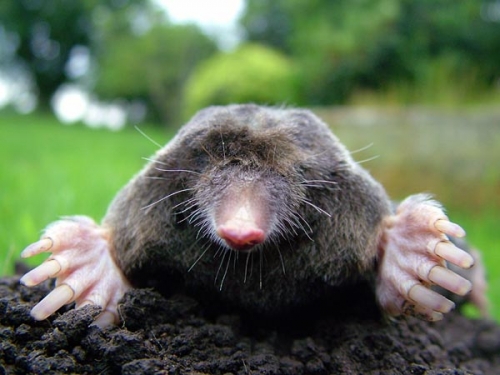
This technique is very popular, but has a characteristic local effect. Also take into account that you will not be able to control weeds mechanically, as the mesh will not allow you to pull out the weeds. Only the chemical method will do.
Ultrasonic repellers
If you are looking for a solution to how to deal with moles in your country house, then keep in mind that the most effective method is the use of a special ultrasonic repeller. This way you can drive the animal away from your site without having to kill it. The creators of such devices relied on the physiology of the mole. This animal has underdeveloped visual organs. But the sense of smell, perception of vibration, and hearing are heightened.
Mole repellers operate using ultrasonic radiation. Vibrations are created in the soil environment that are unacceptable to the pest. When a mole comes within the range of the repeller, it begins to experience constant discomfort and perceives it as a danger, which forces it to flee the area. The range of devices varies depending on the model and manufacturer.

The installation is not dependent on weather conditions, so it is considered quite practical. Thanks to the work from solar panels, full autonomy of the ultrasonic mole repeller is guaranteed. Without replacing them, the device is able to function throughout the entire warm season. But the most important advantage of the repeller is its humanity. Animals do not die, but go to settle in new territories.
Mechanical repellers
Mechanical repellers operate on the principle of generating broadband sound vibrations. Thanks to the operation of such devices, moles will dig further and further from the sound source, and therefore further from your site.
You can make one of the simplest devices designed to combat moles with your own hands. It is a pinwheel made from a plastic bottle. Prepare a bottle and a piece water pipe. Hammer the pipe pieces into the ground. The lower end should be located deeper than the level of the tunnels that the animal digs.
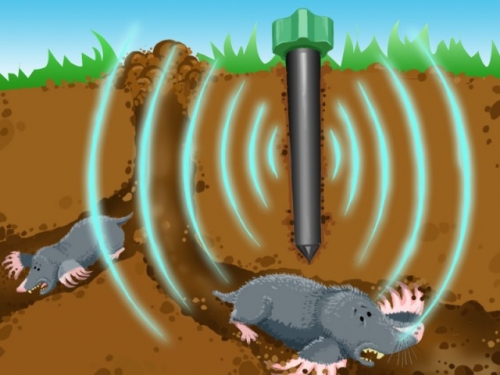
It is recommended to drive a pin into the upper part of the pipe, which has a diameter of about 8-10 mm. It should be reinforced in the center with a wooden stopper. Burn the bottom of the bottle using a hot metal pin or nail. The diameter of the hole should be slightly larger than the diameter of the pin. Make slits on the bottle along a solid line. Bend the plastic along the dotted line. Make 4 such bends. A trap bottle like this will spin even in the slightest wind. The hollow pipe resonates, creating noise. It also scares away moles.
You can also place empty champagne bottles around the area. It is recommended to dig them into the ground in a well-ventilated place, while maintaining an angle of 45 degrees. When the wind blows, howling in empty bottles will scare away moles.
Poisoned baits
This technique is not at all humane and may seem unacceptable to some. However, the use of poisoned baits does occur. Moles are insectivorous animals. They eat mainly larvae and earthworms, and pay attention to toxic bait last. Therefore, it is important to place it correctly on your site.
To determine a place for bait, you need to find the mole's active course - the surface one. To do this, press down on the move with your foot and wait a while. If the mole in the garden restores the tunnel after a couple of days at the place you designated, then the move is active. After finding the passage, carefully make a hole in it.

You should put a toxic substance in it; a teaspoon will be enough. In this case, the drug should fall to the bottom of the tunnel. You can also throw a couple of pieces of calcium carbide into the hole and pour some water on it. Then close the hole, for example, with a lump of soil. Press down with your foot, but the soil should not cover the bait. Such manipulations must be done in different places on your site. The mole will find the bait and eat it.
A fairly effective bait can be prepared this way. Place the earthworms in a clean container, cutting them into small pieces. Sprinkle these worms with any poisonous powder, for example, arsenic. The bait is placed into the molehills with tweezers, using small portions. Poisoned worms will retain signs of life for another 20 minutes. Thanks to their developed sense of smell, moles will find food, eat it and die.
Poisonous gases
There are many effective anti-mole products on the market, such as “gas bombs”. However, these poisonous gases are not always effective. For example, they are not recommended for use in an extensive network of tunnels. After all, the mole digs quickly, closing the gassed section tightly and continuing to expand the tunnels in your area. But if the move is small, then you will succeed.
You can also scare away pests with the help of sulfur smoke, which has an unpleasant odor. In this case, the animals will run away very quickly and far away, abandoning their habitual places. You can use the most ordinary checker “Fas”. Insert it into the hole, set it on fire and cover it with a bucket. However, remember that a lot of damage can be done. All vegetation around the passage half a meter in each direction will die.
Mole traps and traps
If you want to prevent the appearance of garden plot molehills, it is useless to block the exits with stones and cover them with earth. Referring to the experience of many summer residents, we can say with confidence that molehills will immediately appear in other places. And if you didn’t know, then take note that moles are excellent swimmers! Therefore, it is more effective to place a special trap in an active deep move.
It is best to place the mole trap in the main passage. Since the animal visits him several times a day. The main passage always runs in a straight line, connecting two mounds of earth. Moles often make main passages along fences, fences, building foundations, garden paths, hedges, bush plantings, that is, any boundaries made by humans. The winding “test” passages created on lawns may not be reused. Therefore, there is no point in setting a trap there; the mole may never fall into it.
So, you've found the move. Tread the soil, it should not crumble. Carefully open up the soil. Charge two mole traps to place them on both sides of the tunnel, since it is unknown where the mole will come from. Insert them, preferably halfway through the stroke. Place a board on top. Remember that the entrance ring of a good trap must be closed. Do not take traps with an open ring, because in this case the mole may escape.
Slomon's trap will also help you get rid of moles. This is a cylinder made of any material - tin, wood or galvanized iron. The diameter of the trap is such that it fits into a molehill. Hanging doors are attached to the ends of the trap. They open exclusively inwards. The mole falls into a trap, the door closes, but there is no way back.
Anti-mole wall
If you still don’t know how to deal with moles in the garden, you can build a so-called “wall”. Backfill around the perimeter of the site. For this it is customary to use broken brick, gravel. Stick to the following indications: width - at least 20 cm, depth - 40 cm. Moles will reflexively “decide” that this is bad soil, that there is no food here, and will bypass the area.
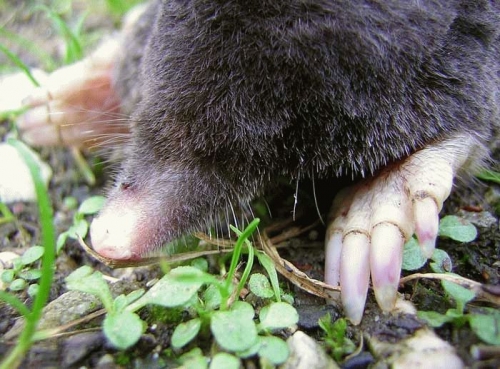
You can do it differently. Fence your area with a fine mesh, dig it into the ground at least 50 cm. It is advisable that the mesh rises 20 cm above the ground. Worms will be able to pass through the mesh. But it is impenetrable to moles. However, remember that it is recommended to arrange the mesh before the moles appear on the site.
Unpleasant smell
Many summer residents say that moles are very sensitive animals to unpleasant odors. Therefore, you can bury rags soaked in various substances in molehills. Most often, they use kerosene, turpentine, naphthalene, ammonia. You can fill the tunnels with carbide, tar and other dry substances with a specific odor. Just be sure to pour water on top of them and close the holes made.

Some desperate gardeners do things differently. They use rotten eggs, which give off a terrible fish head aroma, and whey. Many scraps will do. Bury them in a move, and the mole will not withstand such an attack. However, remember that everything is good in moderation. Do not overdo it, otherwise you will have to wear a gas mask while on site!
Plants against moles
People believe that even a mole has plants he doesn’t like. Imperial hazel grouse is a popular flower among many summer residents that blooms in spring. It has a specific smell for a mole. Or rather, the aroma exudes from the earthy hazel grouse bulb. It is recommended to plant the flower around the perimeter of your site.

You can also plant beans or any legumes around the area where the moles live. Pests don't like their smell either. Even if you think that beans are not a very aesthetic plant, the result is worth it. Moles will leave the area within 2-3 weeks.
Traditional methods
Sometimes the simplest measure against moles becomes effective - flooding the holes with water. Use a garden hose for this. However, before you get rid of moles, remember that you should act very quickly and without delay. If you know for sure that you cannot quickly fill the entire system of mole tunnels, then you should immediately abandon this idea. This way you will only stimulate the activity of the mole: the animal will quickly begin to break through passages in other parts of your territory.

Plus you can use the old one old-fashioned method, associated with the expulsion of moles from a vegetable garden that is already more than 200 years old. To begin, break the reeds, making sure that the length is 1.5-2 m. Insert it one at a time into each mole hole. At least 60-80 cm should remain on the surface. Thanks to the reeds, an effect similar to the howling of the wind in a chimney will be created. The pests disappear literally after a week.
And finally, we will advise you to get rid of earthworms, which moles like! And pests will no longer come to you. To do this, it is recommended to water the soil with a 10% soap solution. They do this 2 times a year - at the beginning and end of the summer season.
Moles and shrews are unwanted guests in a garden plot or vegetable garden, causing a lot of trouble for summer residents. In search of food, leading an underground lifestyle, these animals tear up tunnels and underground labyrinths in the country, destroying the structure of the soil and damaging the root system of plants. By digging tunnels underground, animals throw soil to the surface, forming mounds in the garden, and thereby spoil appearance plot, flower bed or lawn. In addition, underground pests destroy beneficial insects: worms or ground beetles. The fight against moles and shrews is the primary task of gardeners and summer residents to preserve the harvest. After watching the video and studying the article on how to effectively get rid of pests using folk and chemicals, you will find the most suitable method for dealing with them.
Habitats of moles and shrews
Moles and shrews choose fertile, light and loose soil. These are underground mammals that, due to their blindness, rarely come to the surface. It should be noted that animals do not eat plants, but feed only on insects, including crop pests. Their main harm is that, by digging underground passages and labyrinths, they damage the roots of shrubs and garden crops, thereby causing irreparable damage to the crop. In addition, these animals are very prolific. For example, a female shrew can have four litters in a season! Therefore, the earlier pest control is started, the more effective it will be.

If your country cottage area is located near a forest belt, it is possible that in one dry year an uninvited guest will visit your territory. And he will come not just to stay, but for permanent residence. This unpleasant neighbor, annoying many summer residents and gardeners, is a mole. In hot weather, when the forest soil is poor in earthworms, beetles and larvae, the pest moves to summer cottages.
This uninvited neighbor, unfortunately, never moves in alone. Living alone, he would even benefit your garden, since moles eat the larvae of wireworms that spoil potatoes, and the soil plowed by a mole is ideal for planting cultivated plants, since it no longer contains weed seeds.
But moles come in groups, and therefore we have to think about pest control.
Most effective method To prevent the appearance of moles in your garden - fence the area around the perimeter with a fence made of slate or metal sheets. They need to be dug to a depth of at least 70 cm and a height of at least 20 cm. In this case, the animal will simply not be able to enter your territory.
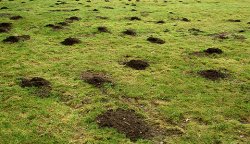 Experienced gardeners also advise planting leguminous plants around the perimeter, which repel the animal, and periodically deep plowing the area of the site. But if your garden is planted with trees and shrubs, then this is naturally impossible.
Experienced gardeners also advise planting leguminous plants around the perimeter, which repel the animal, and periodically deep plowing the area of the site. But if your garden is planted with trees and shrubs, then this is naturally impossible.
What to do if a mole has already made its way in and is destroying your work.  And the main advice - if you notice one mink, do not wait for events to develop, take immediate action before your dacha turns into a battlefield with moles.
And the main advice - if you notice one mink, do not wait for events to develop, take immediate action before your dacha turns into a battlefield with moles.
For those who are not involved in growing plants in the garden, fighting moles seems barbaric and cruel. Summer residents know that if there is a mole in the garden, it’s time to prepare for a real war, in which all means are good, and questions of humanity are no longer relevant. Is the mole really that dangerous for the harvest and how to deal with it so that the garden is saved and your conscience does not torture you - we will try to figure it out in this article.
Studying the enemy

The mole is a contradictory animal. It does not directly harm plants in the garden - it does not eat fruits, leaves or roots. Moles feed on worms, larvae, beetles, frogs, and other representatives of “small and medium-sized fauna” that live in the garden or vegetable garden.
For example, a mole eats the larvae of the click beetle (or wireworm), which causes great harm to root crops (potatoes, carrots, beets, etc.). That is, we can say that these animals provide “possible” assistance to summer residents in the fight against pests, but... why then is the fight against moles or shrews such a sore point among gardeners themselves?
All because without causing harm cultivated plants directly, moles in the countryside cause indirect harm by damaging the root system of plants. Such damage is quite comparable to the “losses” caused by pests.

Paradoxically, there is not much reliable data on the life activity of these animals. Even how much this animal eats is controversial and controversial. Each summer resident has his own methods of dealing with them, most of them are based on personal experience, advice from neighbors, legends and myths, as well as... advertising. A very limited circle of people knows how to get rid of moles in a dacha without harming the harvest, and without even conflicting with one’s own humanity, and, judging by most publications, they are in no hurry to share their secrets.
But still, let’s try to systematize the few information and methods that most gardeners still recognize as effective.

Let's start with the fact that moles are not at all blind, “infantile” (sedentary) creatures, as they are portrayed to us in children’s cartoons. These animals have really poor eyesight, but at the same time a very keen sense of smell, and hearing is also well developed. In addition, they are very agile - try to catch a mole, you will see that “in a race” it can give a head start to even nimble rodents! In addition, an adult eats quite a lot. Therefore, fighting moles in the garden requires more ingenuity from the gardener than speed and decisive action.
Considering the weak and strengths moles, you can develop your own methods of combating them or use folk advice.
Preventing capture
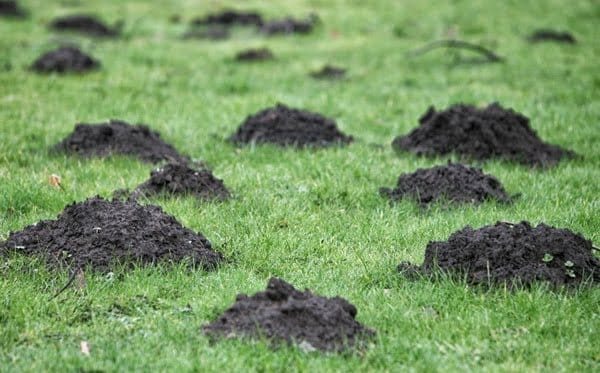
In this case, the word “capture” is especially relevant, since moles do not just settle in a garden plot, but take over entire families of it - a mole will not come to your garden alone. Most often, the “family composition” includes 3-4 adult individuals, as well as several young ones.
It is difficult to say on what principles relationships within this species are built, but experts note that moles almost never “conflict” with each other; they clearly divide the territory into “zones of influence” of families (like the Italian mafia).
Therefore, in order to get them out of the area, you will have to try - each “family” has its own system of passages and tunnels, which means you will need to fight against each of them, using different means.
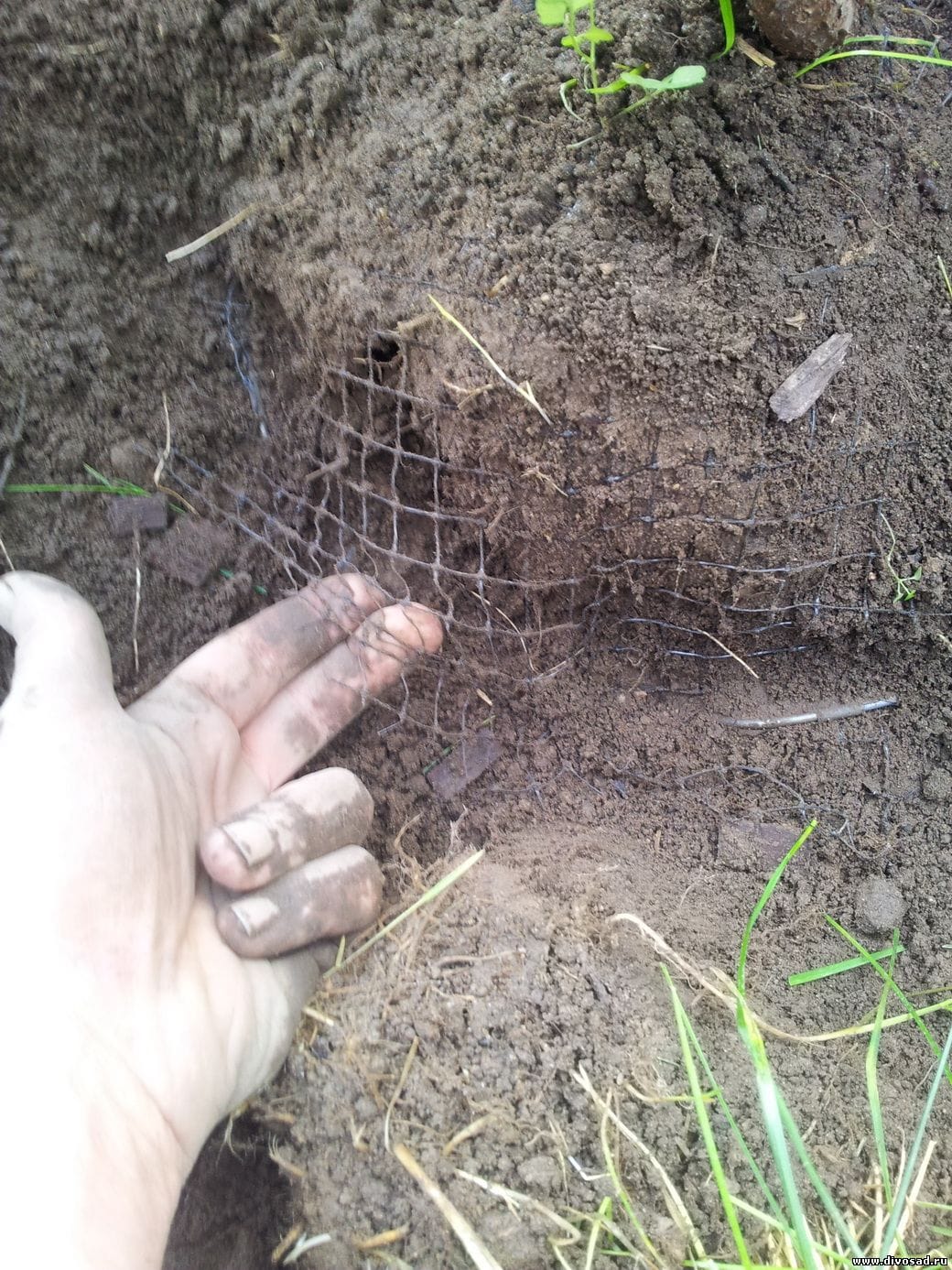
It is these difficulties that force experts to say that preventing moles from infesting an area is much easier (and cheaper) than fighting them later. And most effective remedy in this case, a reinforced mesh buried around the perimeter of the site.
Of course, this product may seem very expensive at first glance - you will need a lot of mesh. But, firstly, it will last a long time, and secondly, more effective way They haven’t figured out how to keep the pest out of the garden yet.
The mesh is buried to a depth of 50 centimeters with a protrusion above the ground of 10-15 centimeters. Instead of a mesh, some garden experimenters recommend using slate or wooden panels. But that's not the most the best remedy protection - together with moles, you will close the road to the site and microorganisms useful for soil fertility.
We are starting to evict

We have already said that catching a mole is a rather difficult task. These animals are very sensitive, so it is this weakness that must be used to get them out of the area.
In particular, their sense of smell. Moles really don't like strong smells! Therefore, you can use strong-smelling plants against them - for example, flowers. It is believed that a mole in the garden cannot stand being in the vicinity of daffodils, marigolds, and also “runs” from garlic and onions.
You can also use a more “strong-smelling” remedy - herring. In general, this method causes a lot of controversy. Some summer residents claim that herring laid out on the property scares off not only moles, but even neighbors, since over time the stench from rotten fish becomes unbearable for those around them.

Other gardeners claim that this will not scare away the “beast” and advise stocking up on... validol. No, not at all to relieve heart attacks on harvest days, but just for “treating” uninvited guests. Of course, a mole (in his right mind) does not eat pills, but their scent, barely perceptible to the human sense of smell, is unbearable for the animals. If you put the medicine in the holes (especially in the “working” tunnels with access to the surface), the mole will not stay in the garden for long - it will leave, taking the whole family with it.
By the way, good way How to get rid of moles in the country is suggested by the animals themselves - they avoid certain plants that emit a certain aroma. For example, moles do not like lavender - its extract can be used to fight them in the area. It is enough to “treat” the mole tunnels several times with a mixture of lavender and essential oils and the pest will go away.
The option with castor oil works similarly. Some summer residents advise mixing it with liquid soap and water, and then pouring this mixture into the shrew tunnels after watering the plants or after rain.
Let's keep pushing
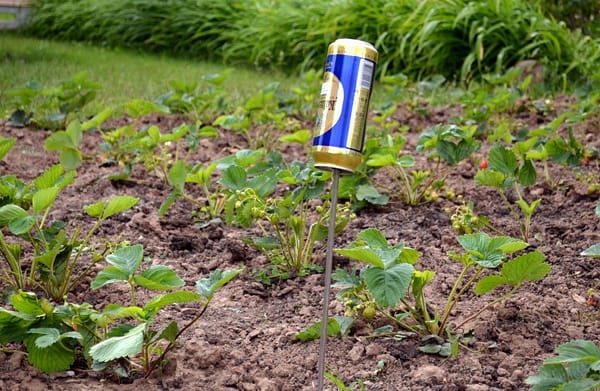
Remember how we noted that in addition to their sense of smell, moles have very acute hearing? Their dislike of “noise effects” can also be used on site to combat unwanted visits and settlements.
For example, a very common remedy is a “do-it-yourself mole repeller” made from aluminum cans - a soda or beer can cut in half, “planted” on a metal or wooden stick. Several such “scarers” are placed on the site, choosing the places where moles are most active. It is believed that the noise created by the movement of the can by the wind greatly irritates the animals and they leave the area.
A glass bottle on a metal pin works in much the same way. In addition to noise, the wind in a glass container creates vibrations transmitted through the “support” into the ground - under such conditions a mole cannot exist in the garden.
Let's go on the offensive
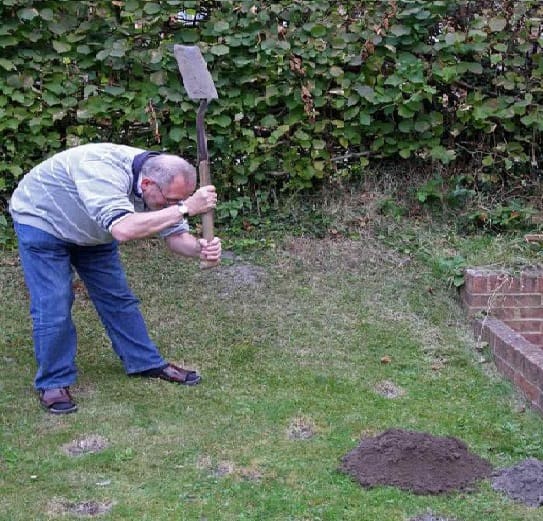
If the "preventive" measures did not work, and folk remedies It was not possible to remove the moles from the site, and you are still tormented by the question of how to get rid of the shrew and its “relatives”, we hasten to upset you - it will not be possible to avoid bloodshed. You tried but they didn’t understand you, it’s time to act radically. We’ll have to poison and kill, no matter how sorry the animals are...
The use of chemical weapons is prohibited by the world community, but in the war against moles it is often impossible to do without them. Many gardeners claim that moles do not eat poisonous baits offered by manufacturers. However, anything can happen - suddenly he tries... poison, which is sold in stores as a remedy against moles, often works more effectively than any other methods. Apparently, moles also have their own “gourmets” for every “taste” - you can use this method.

And yet, “physical” extermination will be more effective. You won’t have to think about what your “enemy” is eating and worry that his “nose will be stuffy” and he won’t feel the “smell of danger.” Various mole traps and mole beaters can be found in specialized stores, or you can make them yourself - you can search on the Internet step by step instructions their creation (from pipes, plastic bottles, wires, etc.) One way or another, and the most important thing is to install them correctly:
- Choose only existing “working” passages and tunnels;
- Install traps at a depth of no more than 15 centimeters;
- The diameter of the trap must match the diameter of the mole passage;
- Check and change traps regularly.
If you managed to catch a mole and it remains alive, do not even release it onto your neighbor’s property.
As sad as it is, the animal will have to... be eliminated. Otherwise, the mole will settle in the garden again (if you really can’t raise your hand, take it further into the forest and don’t think that it will die there).

Yes, I feel sorry for them. Yes, they may seem cute. Yes, this animal does not eat your crops. But it threatens your plantings, which means you need to fight it. Start the fight on your site with preventive measures, use an integrated approach to remove the insidious pest from your “acres”. Perhaps in your case it will be possible to scare off with smell or noise and you won’t have to resort to more radical actions.
Don’t forget also that sometimes it’s easier to catch and get rid of moles collectively than alone - talk to your neighbors, because for you the plots have boundaries - the animals don’t have them, if they settled in your garden, most likely in your neighbor’s garden they also live. Perhaps together you will be able to find an effective way to solve the problem.
